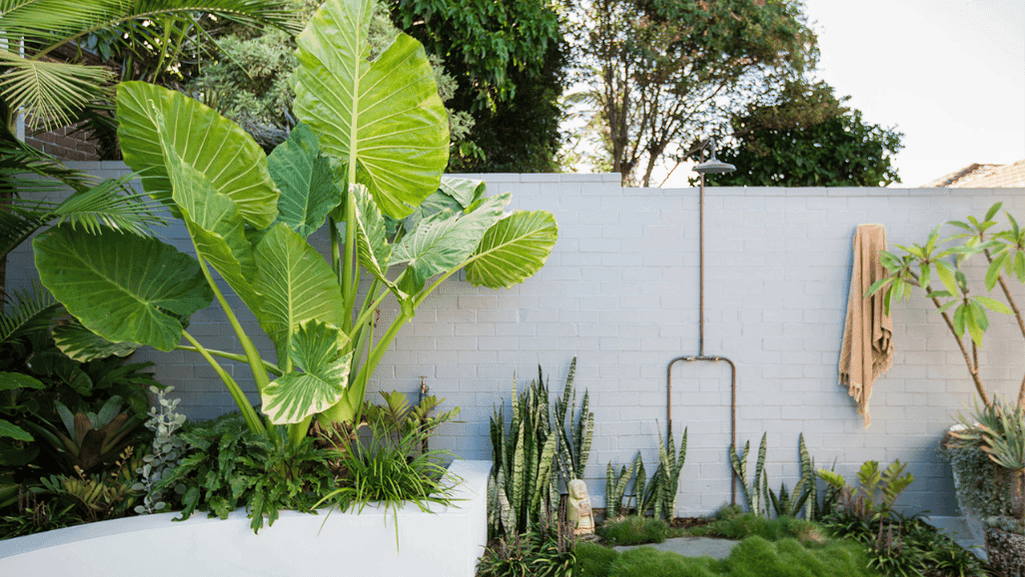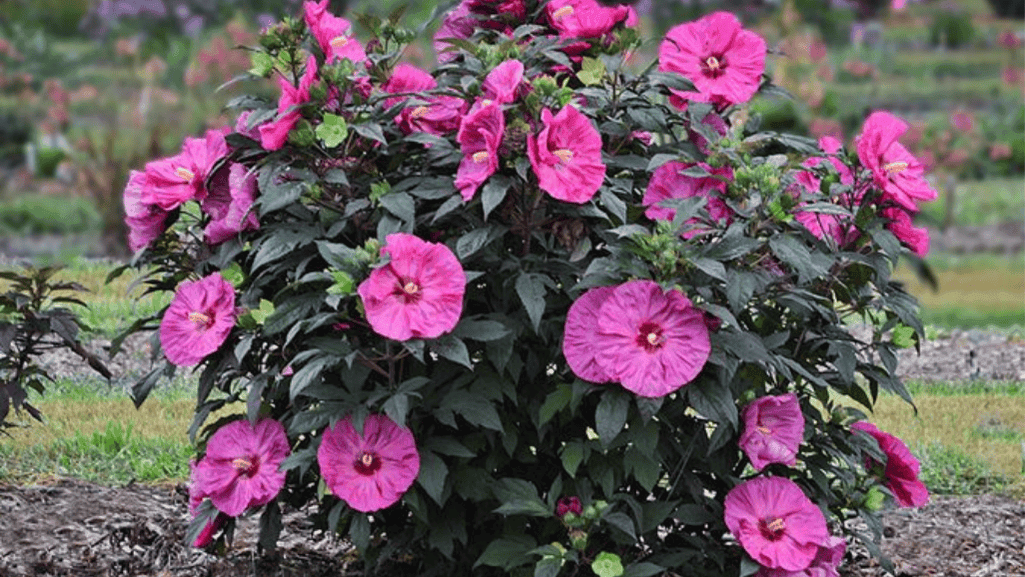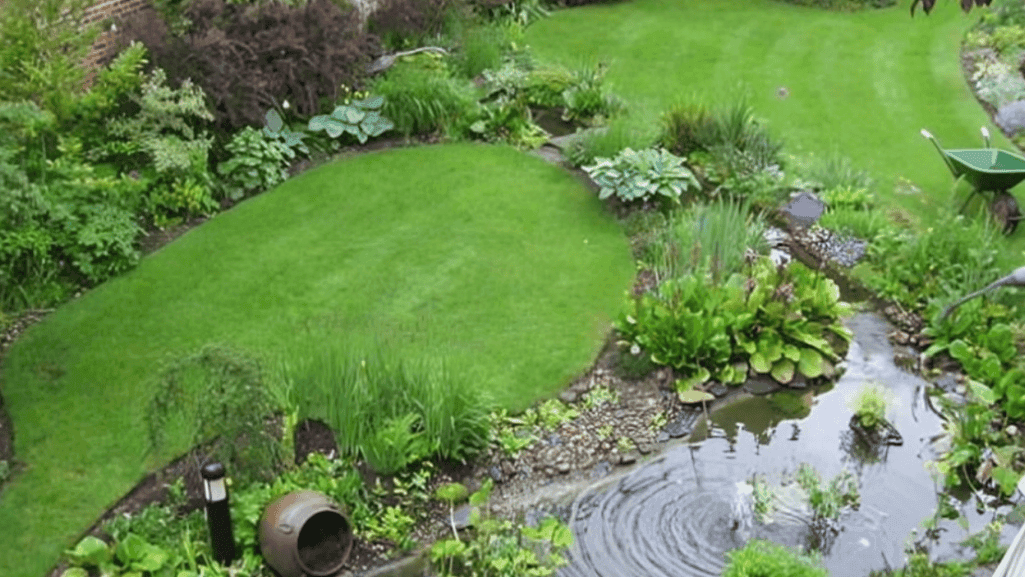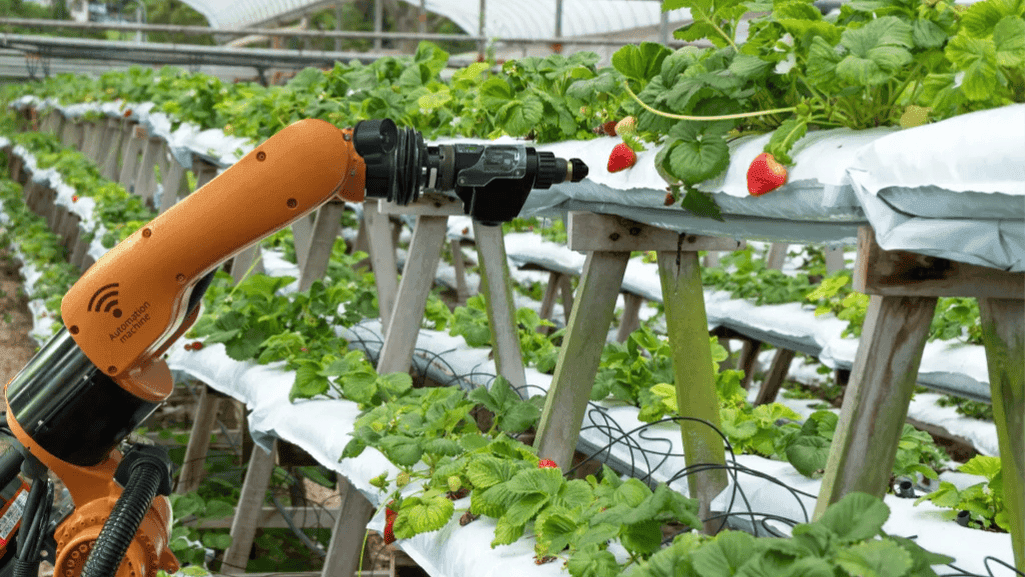
Beautiful flowers gardenia Plants For Your homes

Florida’s warmth and humidity create a perfect setting for tropical climate garden lovers. In places like Fort Lauderdale, you can easily create your own paradise. With the right gardening tips, growing lush greenery is easier than you think.
Imagine having plants like the big, green monstera or the bright bird of paradise flower. The area is great for growing many types of plants. You can enjoy beautiful plants and even eat some of them. The Living Color Garden Center in Fort Lauderdale is a great place for gardeners looking for the best plants for their tropical climate gardens.
Zone 9 to 11 is perfect for tropical plants and houseplants that grow easily. It’s important to use fertilizers carefully to avoid too much growth and not enough flowers. Container gardening is a great way to take care of your plants and protect them from the weather.
Gardens in tropical areas do well thanks to the warm and humid climate. This weather helps plants grow and stay vibrant. With no harsh winters, gardens can be lush and green all year.
Tropical weather is always warm and humid, which is good for plants. It has rainy and sunny days, perfect for gardening. This lets gardeners plan their work to match the weather, helping plants grow well.
A warm and humid climate is great for gardens. It makes plants grow faster and keeps them hydrated. This means gardens can grow all year, giving more crops and flowers.
Knowing about tropical weather and its benefits helps gardeners. They can make their gardens beautiful, support nature, and help the environment.
The beauty of a lush, vibrant tropical garden design starts with knowing how to use texture in gardening. Texture is key to creating the lush, layered look of these gardens. It uses a mix of tropical plants to get this effect.
Big-leafed plants like Alocasia make a bold, smooth base layer. They’re essential for the tropical look. Adding smaller-leafed vines and shrubs adds complexity, like the undergrowth of a rainforest. This mix of plants makes the garden more interesting.
Adding queen palms and bromeliads brings more texture. These plants are perfect for Southern Florida’s climate. They add height and unique shapes to the garden. This mix of sizes and shapes is crucial for texture in gardening.
Water features can also enhance your tropical garden design. Fountains or ponds add sound and movement, making the garden more engaging.
Choosing big containers, at least 18 inches wide, can make your tropical plants stand out. Fill them with plants that have bold colors and textures. Self-watering containers keep these plants happy with less work.
Adding tropical plants around your pool can turn it into a tropical retreat. The water and plants together make the pool area a beautiful spot.
Plan where you put your plants carefully. Grouping plants with similar needs helps them do well and keeps the garden looking good. Grouping plants together can also make your garden look more put together, like a pro designed it.
To add a fun touch to your tropical garden design, think about adding sculptures or quirky water features. These can show off your style and add to the tropical feel. Your garden will be a lush oasis and a reflection of your creativity.
A tropical garden captures the vibrant colors of a warm, lush climate. Tropical plants inspire a range of colors that pull you into a magical world. This color palette makes the garden a feast for the eyes.
Using native plants helps local wildlife and boosts the garden’s true colors. Plants like the ‘Ellen Bosanquet’ crinums or the copperleaf bring realness to the garden. They also make the garden thrive in its natural climate.
Keeping a tropical garden colorful all year is key. Plants like crotons and bromeliads bring a mix of colors with their leaves and flowers. They keep the garden bright all year. Adding plants like hibiscus ensures the garden is colorful during peak seasons.
Here’s a table to show you the wide range of colors in tropical plants:
| Plant | Color Characteristics | Seasonal Variability |
|---|---|---|
| Hibiscus | Bright reds and pinks | High in summer |
| Bromeliads | Varying hues; red, green, purple | Year-round color |
| Elephant Ears | Deep greens with hints of purple | Low seasonal variability |
| Crotons | Vibrant yellows, reds, and greens | Minimal change through seasons |
| Crinum ‘Ellen Bosanquet’ | Burgundy flushed leaves with deep pink blooms | Flowers in late summer |
Using colors from tropical plants adds depth and interest to the garden. When planning, think about how each plant’s colors will work together. This way, you create a beautiful, thriving garden all year.
The tropical biodiversity is a treasure for gardeners and conservationists. It lets us grow a wide variety of plants that are good for the environment and look beautiful. In the tropical zone, the sun shines brightly and it rains a lot. This makes a tropical ecosystem that is unlike any other on Earth.
Understanding how biodiversity works in the tropics is key. These areas are like islands in the middle of different ecosystems. This setup helps keep many species safe and increases the interactions between them. This makes them very important for keeping our planet diverse.
More than three-quarters of all land animals and plants live in these areas. This shows how vital the tropical zones are for our planet’s health. We need to plant carefully and protect these areas to keep them alive.
These regions have a lot of new species and some that go extinct. The constant change is because of the sun’s energy and the fight for resources. This means new species come and go quickly. Conservationists need new ways to protect the species and their roles in the ecosystem.
Species in these areas have evolved to live in the hot, wet climate. Big, isolated areas usually have more kinds of life. Near the equator, there is more food for plants and animals. This means more species can live there.
To use the tropical zone’s biodiversity well, we must take care of the species and understand their roles. By doing this, we help keep the most diverse places on Earth alive. This is good for our planet’s health and its variety of life.
For garden lovers aiming for lush tropical growth, learning specific gardening techniques is key. The tropical climate’s high humidity and changing rainfall need smart strategies for soil and water.
In the tropics, soil quality and type are crucial for plant growth. Adding organic stuff like leaf mulch helps the soil hold moisture better. Plants with big leaves, like palms and philodendrons, need rich soil to do well. So, adding things like sheep pellets to the soil is a good idea.
With the tropical climate’s changing weather, good irrigation plans are a must, especially in dry times. Drip irrigation is great because it saves water and puts it right at the roots. In places like the Coachella Valley, where saving water matters, these systems help plants and the planet.
Key Gardening Tips for Tropical Climates:
| Factor | Consideration | Technique |
|---|---|---|
| Soil Type | Enhance with organic matter | Mulching and regular feeding |
| Water Usage | High in tropical gardens | Drip irrigation systems |
| Plant Grouping | Odd numbers for visual appeal | Planting in threes, fives, or sevens |
Using these gardening tips for tropical growth makes for a healthy garden and supports the environment. Whether for home gardens or big botanical areas, paying attention to soil and water is key to success in tropical gardening.
Adding tropical fruit and spice plants to your garden boosts biodiversity and brings edible landscaping to your yard. This approach supports sustainable living and connects you with the flavors of tropical herbs and other benefits.
When picking tropical fruit plants, think about the climate in your area. In South Florida, mangoes and avocados grow well due to the mild winters. In Central Florida, loquat and white sapote are better choices because they handle cooler temperatures. Your choice affects your garden’s sustainability and yield.
Spice plants are also adaptable. Turmeric and ginger grow well in the tropics and can be in the ground or pots. They add flavor to food and beauty to your garden.
Herbs have two big benefits: they taste great and look beautiful. Basil, mint, and cilantro add fresh flavors to your cooking. A garden full of herbs and tropical plants looks stunning and feels calming.
When mixing spice plants and herbs, think about how they look and what they do. This way, your garden becomes a place of beauty and usefulness. It’s a space that’s good for your health and looks amazing.
Integrating tropical fruit, spice, and herb plants is key to a thriving garden. By using tropical agriculture wisely, you can enjoy a garden full of flavors, smells, and colors.
A lush, vibrant garden with tropical plants layering can make a space look stunning and add value. It’s not just about planting colorful flowers. It’s about placing plants in a way that creates a beautiful, living picture.
One key idea in tropical garden design is to use the natural height difference, like in a rainforest. This means placing plants of different heights to make the most of light and visibility. Here’s how different plants can be used in a layered garden:
| Plant Type | Height | Recommended Placement |
|---|---|---|
| Cascade Palm | 2m | Background Layer |
| Heliconia Jacquinii | Approx 3.5m – 4.5m | Midground Layer |
| Philodendron Shangri La | 1m | Foreground Layer |
| Giant White Bird of Paradise | 6m outdoors | Background Layer |
| Lilly Pilly | 4m to 5m | Background Layer |
| Rhapis Excelsa Lady Palm | 4m to 5m | Background Layer |
| Cordyline War Paint | 1.5m | Foreground Layer |
Using these layering techniques, gardeners can create a microclimate that helps plants grow well and adds depth to the garden. Adding curved paths or water features can make the garden even more beautiful and full of life.
Choosing a mix of plants like palms, bromeliads, and ferns can give your garden a natural yet structured look. Each layer can have a specific role, like providing shade or adding color at eye level.
Mastering tropical plants layering means understanding how plants work together in their environment. This approach boosts the garden’s look and helps each plant grow well.
Exploring companion planting adds depth and function to tropical gardens. This method brings together different plants to work together. It makes the most of small spaces in tropical areas. It also helps control pests naturally, reducing the need for harmful chemicals.
Companion planting updates traditional gardening with a focus on how plants interact. These interactions can provide shade, support, or improve soil. For example, tall plants like corn shade plants that need less sun. Legumes fix nitrogen in the soil, helping nearby plants grow.
Companion planting is great for pest control in tropical gardens. By placing certain plants together, gardeners can keep pests away without using harsh chemicals. Marigolds, for instance, keep pests away and attract helpful insects like ladybugs and bees.
| Plant Pairing | Benefits | Common Pests Targeted |
|---|---|---|
| Marigolds and Vegetable Gardens | Repels nematodes and harmful insects | Nematodes, Aphids |
| Basil and Tomatoes | Enhances flavor and repels aphids | Aphids, Whiteflies |
| Cabbage and Dill | Attracts beneficial insects controlling cabbage pests | Aphids, Cabbage Worms |
| Nasturtiums and Brassicas | Acts as a trap crop for aphids and whiteflies | Aphids, Whiteflies |
| Carrots and Onions | Optimizes space and provides mutual pest protection | Carrot Flies, Onion Flies |
Using companion planting in tropical gardens makes for stronger, more sustainable gardens. These plant partnerships boost garden health and productivity. They also support biodiversity, which is key for gardens to succeed in tropical climates.
 Container Gardening in the Equatorial Climate Zones
Container Gardening in the Equatorial Climate ZonesContainer gardening in equatorial climate zones lets you grow lush, tropical gardens. These gardens love the warm temperatures and high humidity of these areas. It’s not just for looks; it helps with soil issues and protects against extreme weather.
Potted tropical gardens bring beauty and flexibility to gardening. Plants like dwarf oranges and lemons do well in containers. You can place them inside or outside to get the best light.
Containers make it easy to control soil and water, which is key in tropical areas. Since water can be too much or too little, this is very important. Tropical plants need six to eight hours of sunlight to grow well.
Being able to move containers is crucial in areas with extreme weather. If there are sudden storms or lots of rain, you can move your garden to a safe spot. This keeps plants safe from flooding or waterlogged soil.
When it gets cold at night in places that are almost tropical, you can bring plants inside. This keeps them from getting damaged and ensures they keep growing and blooming all year.
Choosing the right plants for the equatorial climate is key. The table below shows some good plants and what they need. It helps gardeners pick the best plants for their containers:
| Plant Type | Climate Suitability | Container Size | Seasonal Tips |
|---|---|---|---|
| Dwarf Citrus (e.g., Oranges, Lemons) | Tropical/Subtropical | Large Pots | Bring indoors when nighttime temperatures drop below 50°F |
| Hardy Banana (Musa basjoo) | Zones 8–10 | Extra Large Containers | Thrives in full sunlight and humid conditions |
| Black Stem Taro (Colocasia esculenta ‘Fontanesii’) | Up to Zone 11 | Medium to Large Containers | Keep soil moist and place in partial shade |
| Peruvian Gold-vein Plant | Suitable for tropical vignettes | Small to Medium Pots | Requires high humidity and indirect light |
By using container gardening in equatorial climate zones, you can take care of your tropical gardens better. You get to enjoy their beauty and benefits, while also protecting them from extreme weather.
 Attracting Wildlife with a Monsoon Climate Garden Setup
Attracting Wildlife with a Monsoon Climate Garden SetupThe monsoon climate garden is more than just greenery. It’s a place that brings together tropical biodiversity and wildlife attraction. By using native plants and structures that mimic nature, gardeners can draw in wildlife. This also helps the environment.
To attract wildlife in a monsoon climate, you need to understand its unique conditions. The monsoon brings lots of rain and humidity. This can help plants and wildlife. By picking plants that love these conditions and offer food, like the Karvi flower or Wild til seeds, you can attract birds, insects, and mammals.
Designing your garden with shelters and breeding spots for wildlife is also key. Dense shrubs are great for birds, and ponds or water features attract amphibians like the Indian Bullfrog. Following sustainable garden practices makes sure these spots support wildlife and are good for the planet.
To boost tropical biodiversity in your garden, include plants that bloom and fruit at different times. This keeps food available all year, drawing in various species. Plants like the Balsamina and Shampoo Ginger add color and are important for many native species.
Using ground covers and mulch keeps the soil moist and protects it from erosion, which is important in monsoon climates. Planting shade trees and creating basins and berms can make your garden more appealing to wildlife.
A monsoon climate garden is a chance to help with wildlife conservation and enjoy a thriving environment. By picking the right plants and arranging your garden well, you can create a place that supports and boosts local wildlife.
In tropical climate gardening, it’s key to pay close attention and use the right care methods. Hot climates mean plants grow fast and need protection from tough conditions. A good plan for keeping plants healthy can make your garden look great and last longer.
Warmer climates make tropical plants grow quickly, so they need regular pruning. This helps them grow healthily and keeps your garden looking nice. Important tasks like aeration, fertilizing, and watering right are crucial to avoid problems like root rot from too much water, especially during the rainy season.
To keep plants healthy, pick the right soil and adjust watering for the heat and humidity. Mulches help keep soil moist and cool. Moving plants with the seasons and using shade can also protect them from stress and too much sun.
| Plant Type | Benefits in Tropical Gardens | Maintenance Tips |
|---|---|---|
| Fruit Trees (Guavas, Mangoes, Avocados) | Rapid fruiting, sometimes within a year | Regular pruning, ensure well-drained soil |
| Vegetable Plants (Heat-resistant tomatoes, Eggplants) | Suitable for humid conditions, robust growth | Use organic-rich soil, frequent watering |
| Rooftop and Container Gardens | Effective space utilization, decorative potential | Check water levels often, use retractable shades |
Custom gardening practices are vital for a tropical garden to thrive. With careful attention, you can have a lush, beautiful garden all year.
 Using Technology to Enhance Tropical Region Gardening
Using Technology to Enhance Tropical Region GardeningIn the world of tropical region gardening, new tech is making gardening better and greener. Smart irrigation systems and garden management apps and tools are changing the game. They help gardeners take care of their plants in a smart way, saving water and resources.
Smart irrigation systems are key for keeping tropical gardens healthy. They adjust watering based on the weather, cutting down on wasted water. This means plants get just the right amount of water, even in places with unpredictable rain.
Garden apps and tools do more than just help with plant care. They let gardeners check on plant health, alert them to pests, and plan maintenance. These tools are perfect for gardeners who love technology and want to take care of their tropical gardens well.
Technology makes gardening easier and more effective, especially in tropical areas. It helps with sustainability and efficiency, making gardens thrive.
| Technology | Description | Benefits |
|---|---|---|
| Drone Seeding | Using drones to plant seeds efficiently over large areas. | Speeds up planting by 25 times compared to manual methods. |
| Geothermal Greenhouse Heating (GAHT®) | Maintains a tropical climate in greenhouses during cold seasons. | Reduces operational costs and extends growing season for tropical plants. |
| Aquaponics Systems | Integrates fish farming with plant cultivation in a closed-loop system. | Enhances sustainability by reducing water usage and operational costs. |
To create a thriving garden in tropical climate countries, one must explore the rich world of tropical climate facts. This journey shows that a lush garden is not just luck. It’s about careful planning, smart design, and new gardening ideas. By using native plants, we can enjoy the amazing diversity of tropical biomes.
Tropical forests cover about 10% of the Earth and are home to over half of all species. They highlight the need for gardening that respects the balance of nature. These gardens are not just pretty. They also teach us about taking care of our planet.
History and science tell us that temperature and salt levels shape tropical areas. This affects how plants and animals live. By managing forests sustainably and using what we know, gardeners can help make our planet more resilient.
With a deep understanding of how everything connects, gardens become more than just a place to relax. They become a key part of protecting our planet’s biodiversity. As more people learn about tropical gardening, they’ll see how their work fits into the larger picture of life in the tropics. Our gardens show our dedication to preserving nature’s beauty and balance.
